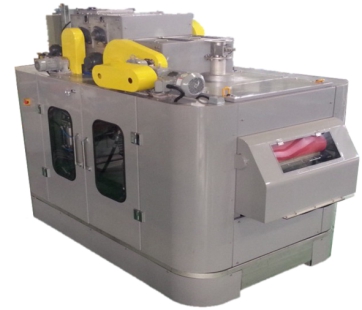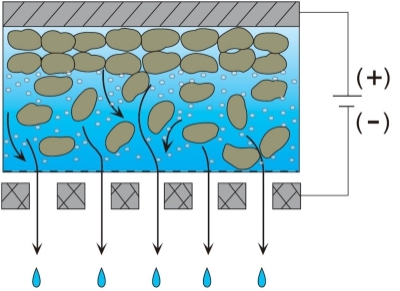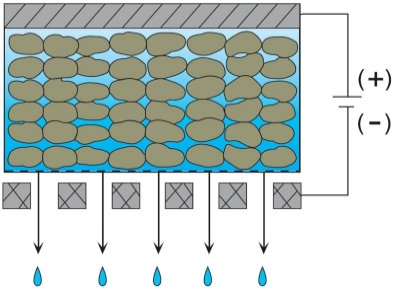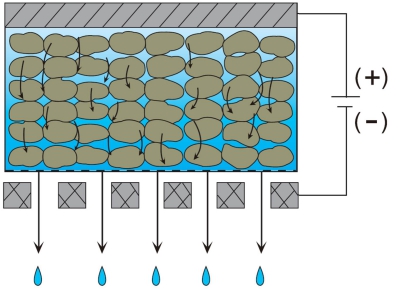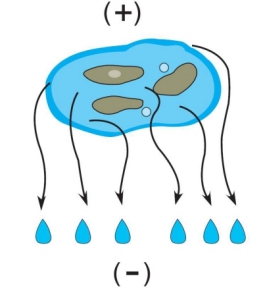Environment Division
Electro-Osmosis Dehydrator
Unlike traditional mechanical type pressurized dehydration, the
Electro-osmosis type dehydration type uses Electrophoresis and
Electro-osmosis to separate moisture from sludge and achieve
high-efficiency dehydration.
When the sludge cake (moisture content of 80wt.% or above) that has gone
through 1st dehydration is supplied between the positive charged drum and
negative charged caterpillar. Since solid sludge particles are mostly
charged of (-) electric charge, By applying direct voltage, particles
moves to anode, and electro-osmosis pushes combined moisture in the sludge
to caterpillar for dehydration to achieve high-efficiency dehydration with
a moisture content of 60 wt.% or below.
· Principle of electro-osmosis dehydration
technology
1. Electrophoresis: solid sludge particles (- charged) move to (+ charged)
anode.
2. Electro-osmosis: As the particles move to anode, moisture is discharged to
(- charged) cathode.
3. By applying electric field, polymers (flocculant) on sludge particle are
discharged due to destruction of bridge reaction.
· Mechanism of electro-osmosis dehydration
technology
1. Initial stage:
Electrophoresis
Dry solids move to anode
2.Middle stage:
Electro-osmosis Separated
moisture moves to the cathode
3. Main Stage:
Capillary force
Interstitial moisture combined with sludge dehydrated to the cathode
4. Final Stage:
Flocs Destruction by Electric field
Moisture in flocs is dehydrated through floc destruction
